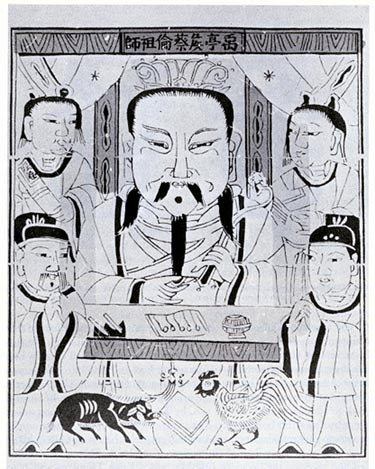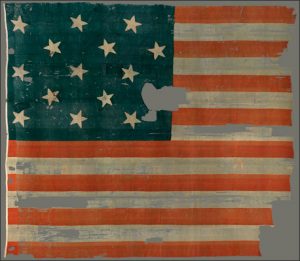Have you ever looked at that piece of paper sitting in front of you and thought, who invented paper? The answer to that question is the Chinese inventor Cai Lun, also known as T’sai Lun.1
Cai Lun was born to a poor family in Guiyang, China, during the Eastern Han dynasty around 50 AD.2 He was a smart and ambitious man. He became a clerical official in a palace at a young age and was much trusted by the emperor He of Han. Lun was a calm man known for being unwilling to take risks, but he was also unsociable, and slightly strange.3

There is a story told about his journey to discovering paper. It all started one day when he was given a stack of documents to process at home by the emperor since he served as a court eunuch. These documents were carved on bamboo strips, which were given to several men to carry on a bull-drawn cart. On the way, the bull slipped and fell under the wheels halfway through the journey, making the bamboo strips fall to the ground as well. While trying to get another bull to carry the strips, Lun had time to think, and he concluded that the strips were just too heavy and difficult to carry and use. They were indeed a burden to the scholars.4

There must be another way out? So much energy and effort had gone into handling the cumbersome bamboo strips. What about something lighter? With what? Lun had no solution. As he was walking, he passed a hemp stalk, and looked at the hemp fiber and thought, “maybe that could be useful.” He carefully removed one layer after another from its fibers, wondering if they could somehow be written on. But they were just too rough and loose. He then thought of the wool from the remains of silk cocoons that might be useful, and that’s when he had it. He ran around seeking help for his experiment. The servants gathered bark, hemp, old silk cocoons, fishing nets, and cloth. They chopped the ingredients finely before cooking them. The result was then pounded to a starchy mixture and dissolved in water before adding another type of starch. When this new mixture was lifted out of the water, it had separated into many fine layers of fabric. Once dried, they became sheets of paper.
Lun then presented the pieces of paper he had made to the emperor. He was overjoyed, and issued a decree to have the whole country adopt the new writing material.

In 105 CE, Cai invented the composition for paper along with the paper making process. Although the tools and machinery have changed in the making of paper and are more complex today, they still employ the ancient technique of felted sheets of fiber suspended in water, drying the water then drying it into a thin sheet.5 To think that this invention would give him world-recognition, and even in his own time he was given that recognition for his invention. After his discovery, all the scholars were exhilarated and appreciative of his invention. As he had been honored with the title of Marquis of Dragon Pavilion, his invention of paper was then called Marquis Cai Paper.
Cai Lun has ranked as one of the top four Chinese inventors. He had made an important contribution to Chinese civilization of his day. And his contribution continues all over the world to this day, to a point where it is hard to imagine life without paper. The invention of paper clearly affects the world today. Cai Lun took paper beyond being a technical invention; he helped drive its widespread adoption to the point were it became a successful innovation, one that dramatically changed the world, and still continues to be a major societal force.
- Encyclopedia Britannica, August 2006, s.v “Cai Lun.” ↵
- Salem Press Encyclopedia, January 2016, s.v “Cai Lun,” by Yiwei Zheng. ↵
- Salem Press Encyclopedia, January 2016, s.v, “Cai Lun Invents Paper,” by Alice Myers. ↵
- Lisa Occhipinti, “A Paper PRIMER,” Cloth Paper Scissors, (2016): 24-26. ↵
- Emily Alward, Cai Lun (Salem Press, Inc, 2010), 35. ↵




52 comments
Steven Hale
Cai Lun’s professional connection to the Emperor certainly helped paper gain traction. I wonder how long it would have taken paper to catch on if someone else had invented it, or if Cai Lun had not had such important relationships. Either way, the paper-making process is clearly a complicated process, and Cai Lun deserves the credit. When I read about the bamboo falling from the cart, I expected the strips to be turned to paper in the mud or something convenient, but the process you described sounds much more intensive.
Sofia Andrade
I had questioned how paper came to be and who invented it but never looked for the answer. This article answered the question that I had asked myself throughout the years. This article gave details to how paper came to be and what inspired it to be created. I believe that it is extremely important that Cai Lun was close to the emperor. If he would have not been close to the emperor perhaps his invention would have not been widespread.
Esperanza Rojas
I was always interested as to how someone thought of paper and how they thought of the development of the process, so this article made it’s way to my “must-read” category. It never passed my mind that, in that time period, they would have to cook the ingredients in order to make the paper and amazed me that they had the time and patience to do that. It also surprised me that they more elements, other than just tree bark, to produce the paper itself. The article was very well put together and extremely informative, which made it very exciting to read.
Isaac Saenz
I have never really given a thought as to who invented paper or how it originated. After reading this article, I now understand how exactly it all went down. This article does a good job of explaining each step that was taken for Cai Lun to finally create a light and convenient way to document information for scholars. Paper, as we know it today, is still such a necessity despite the many advances in technology.
Didier Cadena
I had no idea about the invention of paper, so this article did a great job telling me about who invented it. It is weird to believe that something invented so long ago could still be so important today. It was interesting to read about who Cai was and the impact of his invention. The article does a great job of putting all this information together and still make it engaging enough to read.
Jose Figueroa
Many things that we are used to today, we always imagine were available to everyone. With paper being so basic, I always thought that it was something created much earlier in civilization. I could not imagine having to carry something that they used bulls to lug around. Thankfully, we have lightweight paper journals to take to class instead of those heavy bamboo strips.
Elias Garza
This invention brings great joy to me because it was invented so long ago and is still used today. Honestly, I really feel like paper will soon run out of business due to the technology that is steadily improving. The only way I say it will not go out of business is if someway someone is able to improve paper making with less pollution.
Samuel Stallcup
It’s interesting that a civilization THAT long ago was able to create something we still widely use today. It’s impeccable that the story is preserved well, for paper is an incredible asset to the human race. It’s been important in creating peace, keeping peace, and getting rid of it, too. I think this article did a good job at outlining the story and served it justice.
Kimberly Simmons
I never knew that early paper required so much work. It’s quite strange to think that people used to write on bamboo so long ago, but that just further emphasizes how far we have advanced. It’s good to know who the inventor of paper was, and even better to read the story behind its creation. It is truly amazing how something as small as paper can have a lasting impact.
Robert Rodriguez
I’ve heard this story many time but never was told the actual name of the guy. I could only imagine their struggle to carve,then carry all the bamboo before paper was created and the large burden it carried upon them. I like how the process is, I always found that interesting that he decided to mix silk and hemp to create it. very good reading!